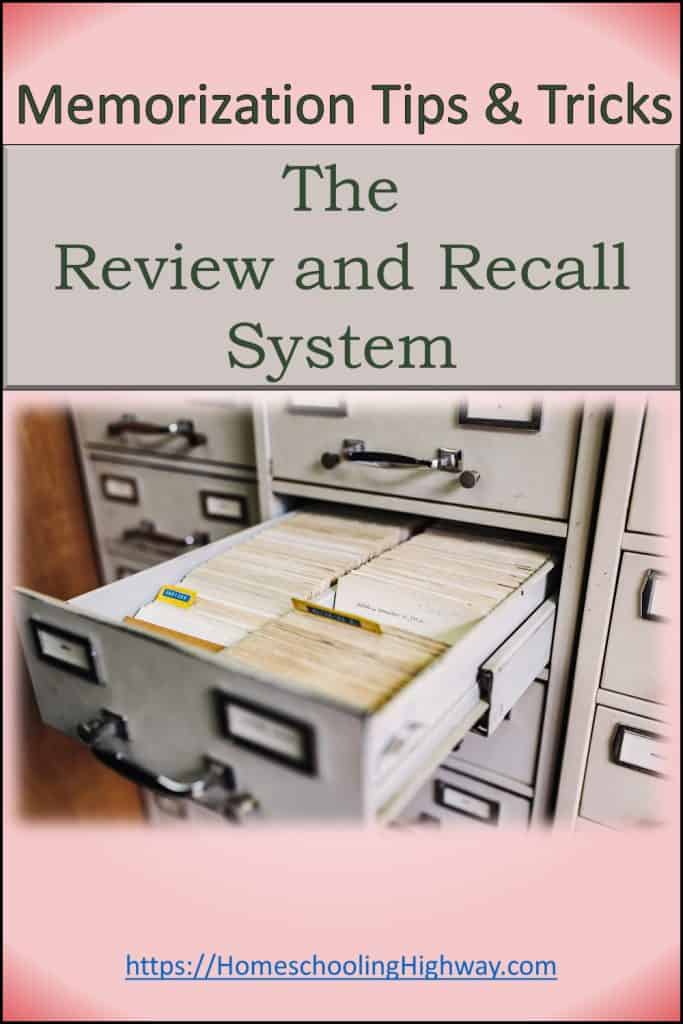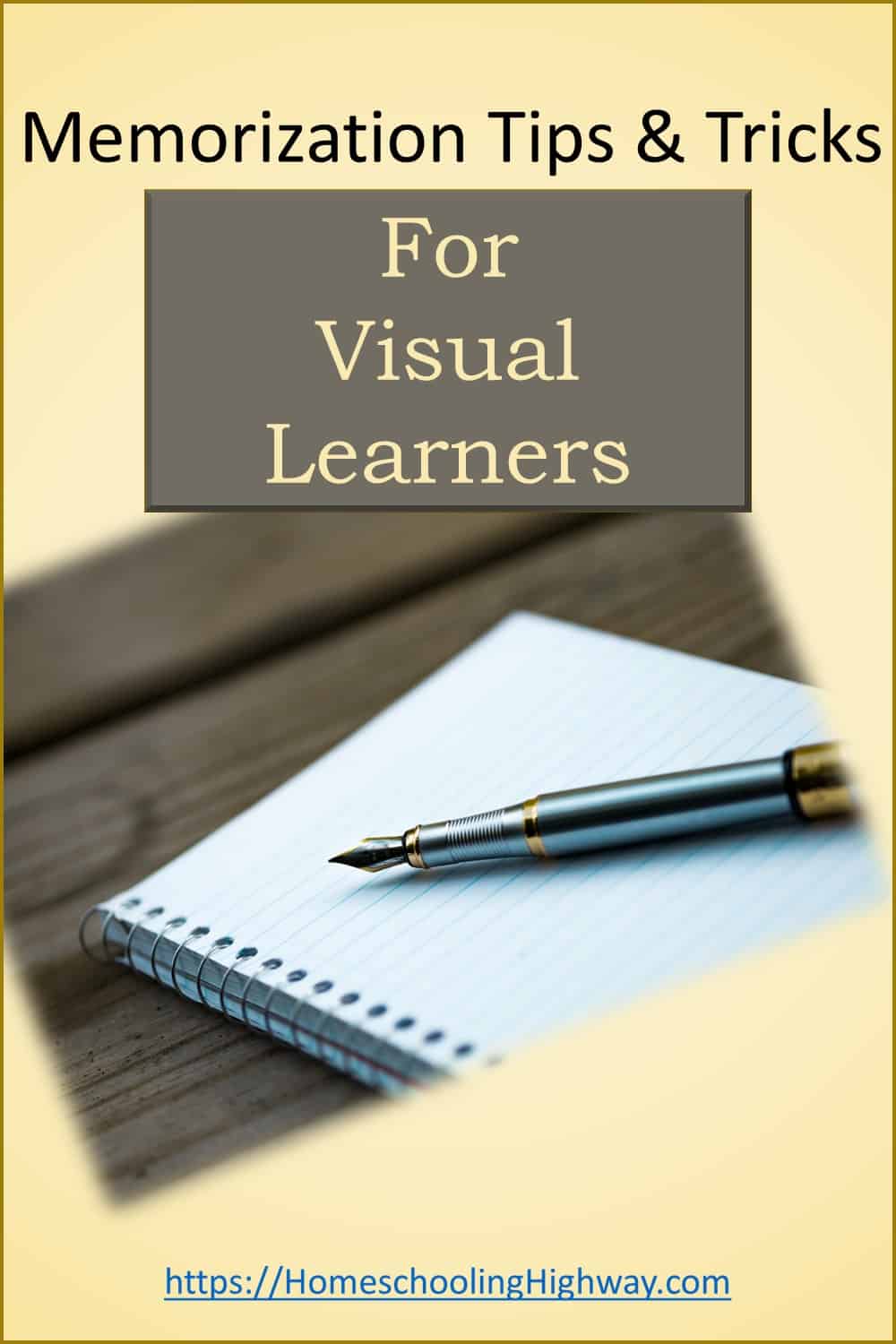
Learning Styles
Working with my own children and children at my church, I’ve come to learn that the key to unlocking the mystery of memorization is in knowing the learning style that suits that person best.
Let’s take a quick look at some different learning styles. Your child may fall into one predominate category or could possibly have a combination of learning paths. There’s nothing wrong with either way.
Auditory Learners
An auditory learner learns best by hearing the information. If your child consistently remembers information they hear from discussions, oral presentations, one-one-one conversations, podcasts, and/or audio books, then your child remembers things well through his/her ears. (So be careful what you say!)
Visual Learners
A visual learner retains information better that they see. This could be any information in written or picture form from books, articles, and/or videos.
Verbal Learners
Verbal learning occurs when a child brings in information through hearing or reading, and then remembers it best by talking about it.
Kinesthetic Learners
Kinesthetic learners learn best by using the information with their hands. This child would be more of a concrete thinker, but also learns best by doing hands-on activities, role-playing, notetaking, and by physically moving while listening or reading.
Basic Activities to Begin With
If you’ve ever spent time with toddlers and preschoolers, you know those kids are just like sponges soaking up information.
There are three activities that these little people love, that help them remember information.
Physical Movement

The first is physical movement.
Motions to songs, sign language, and/or big body movements while singing or talking helps kids remember things.
Rhymes
There’s also rhymes. Kids love rhymes, they’re just fun to say. If you put information in rhyming form, they’ll remember it.
Music
Another great way little kids remember things is through music.
Put the information to a tune and it will stick.

How to use Basic Skills and Senses to Memorize
Now, here’s the secret to making it all work. You take your learning style and then you combine it with some of the basic activities we just talked about and you are off to a great start with memorizing information.
Auditory learners will remember information best, that is put to music and/or rhymes.
Musical jingles and rhyming poems that they create and listen to repetitively will help them.
Visual learners are going to do great with the songs, poems and little jingles too, but they’ll like to read the information.
The verbal learner will enjoy the songs and poems too, except they’ll want to sing it out loud and long.
Kinesthetic learners will do great with the information in musical form, but just add some motions or sign language to it, so they can remember it.
Memorization Tips for the Non-Creative
Let’s just suppose that your child is not coordinated enough to catch on to song motions, or music, rhythms, and rhymes are just not their thing. Well, let’s take the creative part out of the tips and tricks and look at some other ways to memorize.
Don’t worry, there’s plenty of ways to remember things.
Reading Ideas
Let’s concentrate first on some reading ideas.
Make sure that when you read the information that you are concentrating on it and that you understand the concept that is being discussed.
If you don’t understand the information, and it’s just going into your brain and back out again, that’s not good.
You’ll want to do a little study on the background information. This way, you’ll have a foundation of knowledge to build on as you read the new information. If you have any questions while reading, then write them down so you can find out the answers to them later.
There are also some things you can do while reading, that may help you remember the information.
For instance, if you understand the topic, try reading the information out loud.
Record yourself reading either video or audio would work.
Read the facts out loud in different voices.
Sometimes colors help us to remember things. Different color paper, ink, are also ways to read and retain information.

As you look at your paper, take a picture of it with your mind. Shut your eyes and see if you can remember it. If so, try placing information that is important along the side of the paper or even in a corner. Write it in different ink, and then take another mental picture. See if you can recall it.
Writing Ideas
I love to write information, so this is the way that I remember best.
Just like with reading the information on different colors of papers and with different colors of ink, writing and using these different colors can help you remember the information too.

Reorganize your notes
Rewrite your notes in different formats
as an outline
as an essay
as a story
as a mindmap
Create your own quiz
Make flashcard questions
Verbal Ideas
For a verbal learner, try explaining your notes to others.
Teach the information to others without your notes.
Tell the information to someone else as a story. Be dramatic, add character dialogue, and details that are important.
Recording yourself is another great way, as well as verbalizing the information in different voices and accents. Do you know a second language? Now is a good time to practice it with this information.
General Memorization Tips
No matter what type of learner you are, and what type of activity you use, there are general tips that you should keep in mind.
Your Study Area
Make sure your environment is good for studying in. You want plenty of light, a quiet place free from distractions.
Have your supplies available.
index cards
colored paper
colored pens
highlighters
audio recorder
video recorder

Timing and Amounts
Give yourself plenty of time to learn. Take the information that needs to be memorized and split it into small sections or chunks.
Don’t add more, until you’ve conquered the first part.
Make Associations
An association to information can be anything.
If something in your information reminds you of something else, then that is what an association is. You think of the first thing and that reminds you of the second thing.
Associations can be helpful with names, places, and dates.
Be Creative with Language
Perhaps you’ve heard and memorized this funny little question when you were a kid.
How much wood could a woodchuck chuck, if a woodchuck could chuck wood?
Why did you remember it? I remembered it because it used the same words in creative ways. You can say it really fast and impress others, and it’s just a unique little question.
How about this one?
ROY G BIV.
When I was in elementary school this was the name we used to help us remember the colors in a rainbow. Isn’t it interesting how something so simple can stay with you for years and years?
So, if you can use words, first letters, rhyming words, etc., use them to create a unique memorization help.
Repetition, Review, & Recall
Ever hear the saying, “If you don’t use it, you lose it”? This statement is so true.
It can be true for hands-on skills as well as information. Along with using any of the above tips, the key to keeping information in your long-term memory is repetition and review.
As you begin to learn your new information, you’ll want to do any of the above tips over and over. Then, you’ll want to keep reviewing it.
There’s one problem though. As your amount of information grows, so does the amount of time it takes to review.
My Review System
This system works great for quiz questions. You’ll want to write out your questions on index cards.
The question goes on the front and the answer on the back.
Get yourself an index card box and some index card dividers. I just made my own dividers with an index card and then I taped a small square piece of paper to it for the divider part. You can use different color paper for your divider squares.
Next, you’ll want to label your dividers. Label them this way:
- Every day
- Odd
- Even
- Monday-Saturday (each day on its own divider)
- 1-31 (Each number on its own divider)
You want to start by putting your questions behind the “every day” tab. Go over the questions every day.
When you feel a question is mastered, move it behind either the “odd” or the “even” tab.
Now, when you review, you’ll review the cards behind the “every day” tab as well as either the “odd” or the “even” day tabs, depending on the date. If it’s the third day of the month, you would review all the questions behind the “odd” tab.
As you review and you can consistently answer the “odd”/”even” questions correctly, you can promote them to a day of the week tab.
Now, you’ll review the “every day”, “odd”/”even”, and a day of the week section. If it’s Monday, you review all the questions behind the Monday tab.

When you can consistently answer the questions behind the weekly tabs, you will want to promote the question to a monthly status.
Place the question behind a number. Each number corresponds to the date on the calendar. You’ll have to make adjustments for February and months that have only 30 days, but it’s not hard.
If the date is September 12th, then you’ll want to review the questions behind the “every day”, “even”, “day of the week”, and the “12”.
When you can recall correctly the answer to the question month after month, there’s a good chance you can remove the question from the box. It should be in your long-term memory.
By dividing things up this way, you don’t have to review everything every day, but you know that what you didn’t review today, will be coming up eventually through the month.
Cool, huh?
It worked well for me and my kids with Bible verses.
PHOTO ATTRIBUTIONS:
Girl jumping. Photo by Sharon Carr on Unsplash
Music paper. Photo by Scott Kelley on Unsplash
Video clapper. Photo by Jakob Owens on Unsplash
Paper and Fountain pen. Photo by Aaron Burden on Unsplash
Classroom with teacher. Photo by Jason Goodman on Unsplash
Rainbow colors. Photo by Sharon McCutcheon on Unsplash
Index cards. Photo by Maksym Kaharlytskyi on Unsplash











This is a really great article! My 6th and 4th graders are in Bible Drill at our church, where they have to memorize 25 verses, 10 Key Passages, and the Plan of Salvation. They use some of these tricks – using hand motions for the verses, key words and connecting phrases, and writing down the verses.
That’s great, Megan! It really does help make the information stick in your mind by using different fun ideas. Thank you for commenting!